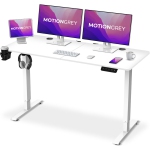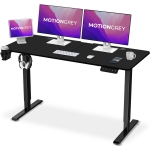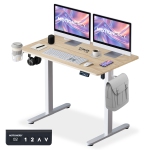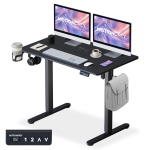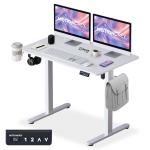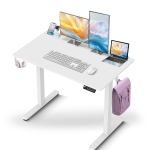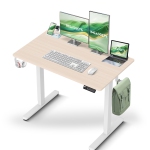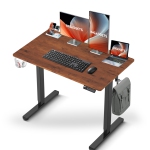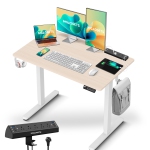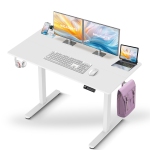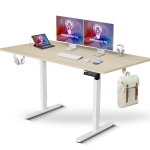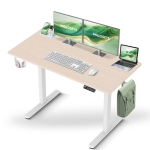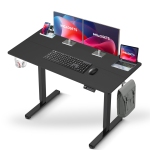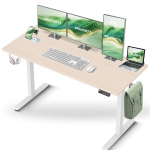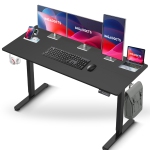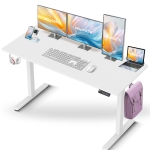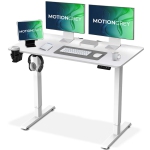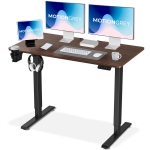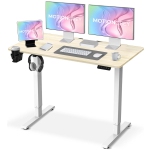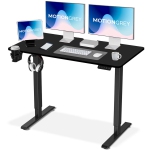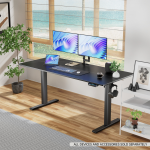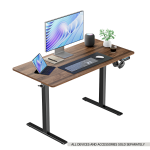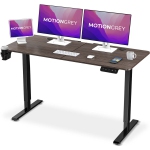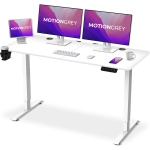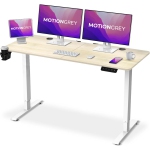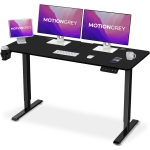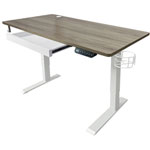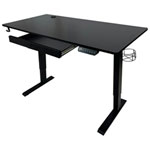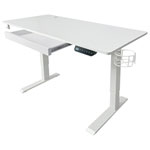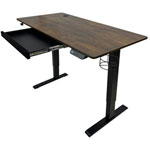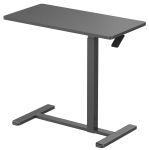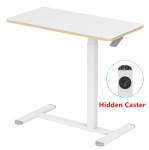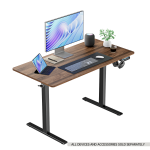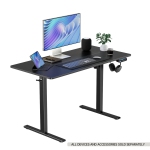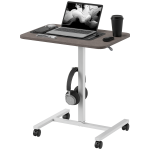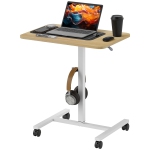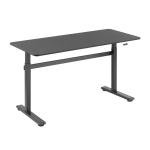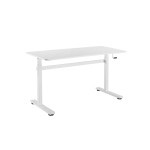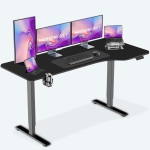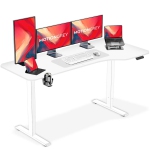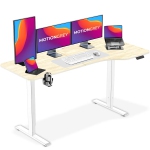Standing Desks
353 results
Improve Your Comfort and Productivity with a Standing Desk
For those working long hours at a desk job, a standing desk can revolutionize your entire work routine. Postural experts have always recommended changing your body's position frequently while working, but adding sit-stand functionality gives you more options than ever to adjust your ergonomics. This helps reduce things like back and leg pain, improving your mood and comfort levels throughout the day and helping to increase your levels of productivity and focus.
What are the benefits of a standing desk?
A standing desk can do a lot for you. They're a great fit for office workplaces or home workstations, and encourage movement and exercise throughout the day. Standing for 15-30 minutes every hour has been suggested by researchers to be the ideal sit-stand ratio for decreasing back pain and passively burning slightly more calories than sitting.
By alternating between sitting and standing, you may experience improved energy levels, less lower back pain, and a lower overall risk of obesity.
What is the proper way to use a standing desk?
When using a sit-stand desk, make sure to take full advantage of its adjustable height. Researchers suggest that standing all day long may actually cause lower back pain, but that mixing sitting and standing reduces discomfort. That means that you should have at least two heights that you use your standing desk at every day: one for sitting, and one for standing.
Just like with your office chair, it's important to use your standing desk with proper ergonomics. Your head should sit comfortably level, with your eyes looking down slightly at your tilted monitor. Your back should be straight and your forearms should rest at 90-120 degrees at the elbow, reaching your keyboard while keeping your upper arms relaxed and close to your torso.
How can you get the most out of your standing desk?
To get the most out of your adjustable standing desk, make sure to use it as an opportunity for movement. Look for a model that you can both sit and stand comfortably at, and switch from sitting to standing at least once every hour. While your desk adjusts to its new height, take a moment to stretch your muscles and go for a quick lap around your office if you're able.
Try adding a monitor riser to your desk to get your monitor height just right, and shift your weight from leg to leg in comfortable shoes. You can also add a comfortable standing gel mat beneath your feet, or add a footrest to help support and vary your sitting and standing posture.
